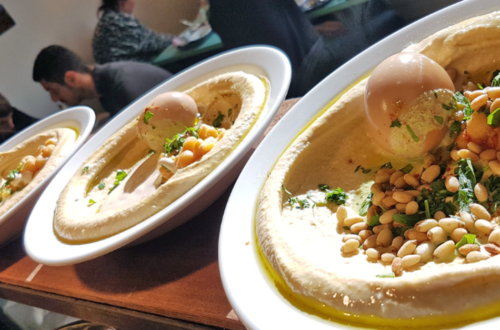
Florence’s Cenacolo di Sant’Apollonia
In a city whose narrow streets are bustling with clueless tourists, presumptuous art aficionados and history buffs, the Cenacolo di Sant’Apollonia offers a much needed “off-beat” respite. Located close to the Piazza San Marco, this unassuming and nondescript building seems to blend into the surroundings. Only the stone signboard outside its door gives any indication of hiding one of Florence’s most underrated Christian art pieces.
On any average day, the cenacolo (Italian for The Last Supper) is devoid of any lines or crowds that frequent other sites such as the Uffizi Gallery or the Cattedrale di Santa Maria del Fiore and is just the kind of hidden gem that guidebooks fail to mention.
No lines outside
The Cenacolo di Sant’Apollonia is the first Renaissance refectory in the city and was just across the corner from our hostel Hotel Veneto. Built in 1445, the convent once belonged to the Benedictine nuns of Sant’Apollonia. Although the refectory has none of the pomp and glamour of other Florentine sites, its larger than life Last Supper (c. 1450) stands out.
An entire wall of the room is decorated with frescos, with the vibrant colours of Andrea del Castagno’s masterful work which was sadly undiscovered due to the cenacolo’s strict enclosure. It was much later in 1860 that Castagno’s Last Supper was revealed although significant damage had been done by an earlier layer of whitewash.
This piece might not be a Leonardo da Vinci but it is a rare one that applies Renaissance perspective effectively. It was painted as if the scene is being observed from outside. The fresco’s detailing stand out in the intricacies of the faces and clothes of the apostles gathered around a long white table. Of particular significance in this haunting and vivid Last Supper is the dark figure of Judas in the foreground, who has been painted to resemble a resemble a satyr, an ancient symbol of evil.
The other vivid frescos above the Last supper represent the Resurrection, Crucifixion and Entombment of Jesus Christ.
This former convent may not require more than fifteen minutes of your time but what was a truly humbling experience for my friend and I was the hospitality offered to us by one of the caretakers we bumped into in the courtyard past the room with the frescos.
A middle-aged woman hunched over, watering a modest collection of pots looked up at us – two lost girls, panting in the summer heat. She didn’t speak a word of Italian but gestured us to share in the contents if her tiny icebox. “Have beer, have beer!” she said, then reading our reluctant faces said “non-alcoholic”. Throwing caution to the wind (after all as Indians we are groomed not to trust easily), we shared in her modest “supper” and laughed and introduced ourselves in languages both parties didn’t understand. She chatted with us in Italian and told us to come again. We never did, we didn’t even get her name although we thought of her every time we got out of the hostel.
This was in 2015. I am not sure if she will be there if and when I visit Florence again. But I hope I bump into her in some other museum in Florence, watering plants and welcoming tourists in unfettered Italian.









